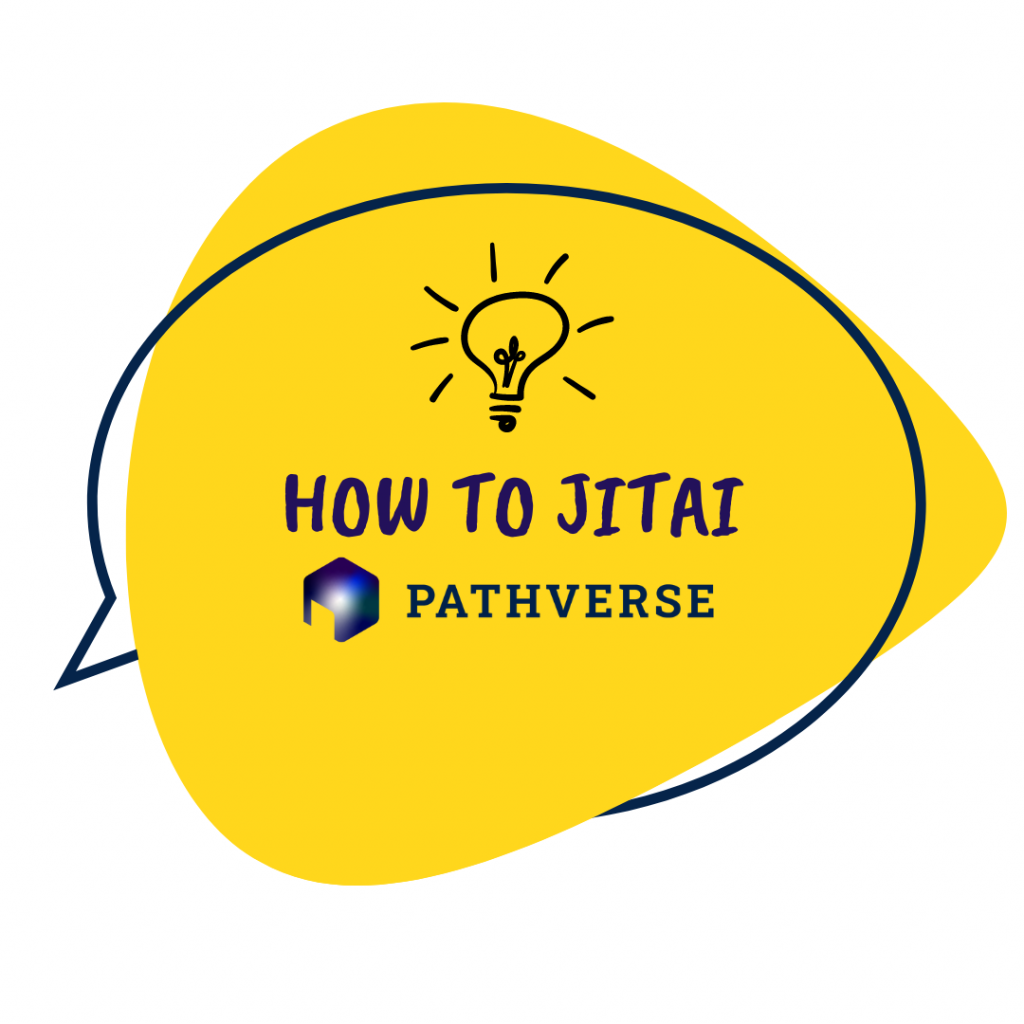Currently, Pathverse is able to conduct what we call “linear” mHealth studies
These types of studies include health behaviour interventions and ecological momentary assessments (EMA).
In intervention studies, Pathverse independently hosts health content, self-monitoring tools, and goal setting.
Step-by-step, that looks like:
-
- Select a behaviour theory
- Develop the modules/lessons associated with the constructs in the theory
- Add Modules (lessons) in Pathverse
- Add Cards to the Modules
- Add content to Cards (text, video, pictures, quiz, survey)
Then, the researcher must select if they would like to create:
-
- Intervention study (time-delay, completion based)
- Daily Diary/EMA study (time-based release)
Visually, Pathverse creates these mHealth studies like this:

Implementing JITAI features into Pathverse will introduce a new trajectory of mHealth interventions
A just-in-time adaptive intervention (JITAI) aims to deliver the right type and/ or amount of support, at the right time, by adapting to an individual’s internal state [1].
JITAI Working Terms [2]:
Outcome: proximal: a short-term behaviour outcome or goal set for the participant to complete; distal: a long-term health outcome aimed to be met by the completion of various proximal goals
Tailoring Variable: components to be met that lead to an action; purpose is to identify moments when behavioural support may be most beneficial
Decision Rules/Conditions: systematic links of JITAI
Action: the result of the decision rules and tailoring variables
Decision Tree: visual representation of the choices to be made and their consequences
Steps to creating JITAI:
-
- Select a behaviour theory/framework
- Identify measurable proximal/distal outcomes
- Proximal outcomes (short-term goals; heart of JITAI):
- Pre-set goals based on different construct or stages of a behaviour change model (e.g., perform 30 MVPA)
- Self-monitoring assessments (e.g., weekly steps <2000 per day)
- Proximal outcomes (short-term goals; heart of JITAI):
- Design decision trees and intervention options using the tailoring variables
- With each proximal outcome goal, design decision rules and educational modules to help participants accomplish that goal along with creating modules for participants who do not achieve their goals
- Add Modules (lessons) in Pathverse
- Add Cards to Module
- Add content to Cards (text, video, pictures, quiz, survey)
Visually, a goal-based JITAI would look something like this:

We are in the early stages of development now, but we can’t wait to share this journey with you! If you are interested in beta testing or have any other feedback, please email admin@pathverse.ca.
References:
- Nahum-Shani, I., Smith, S. N., Spring, B. J., Collins, L. M., Witkiewitz, K., Tewari, A., & Murphy, S. A. (2018). Just-in-Time Adaptive Interventions (JITAIs) in Mobile Health: Key Components and Design Principles for Ongoing Health Behavior Support. Annals of behavioral medicine : a publication of the Society of Behavioral Medicine, 52(6), 446–462. https://doi.org/10.1007/s12160-016-9830-8
- Inbal Nahum-Shani, PhD, Shawna N Smith, PhD, Bonnie J Spring, PhD, Linda M Collins, PhD, Katie Witkiewitz, PhD, Ambuj Tewari, PhD, Susan A Murphy, PhD, Just-in-Time Adaptive Interventions (JITAIs) in Mobile Health: Key Components and Design Principles for Ongoing Health Behavior Support, Annals of Behavioral Medicine, Volume 52, Issue 6, June 2018, Pages 446–462. https://doi.org/10.1007/s12160-016-9830-8








Just Launched: JITAI Features - Pathverse
[…] than our current module release methods. For more information about what JITAI are, please refer to this blog post! Here is a step-by-step approach to creating a JITAI module with […]